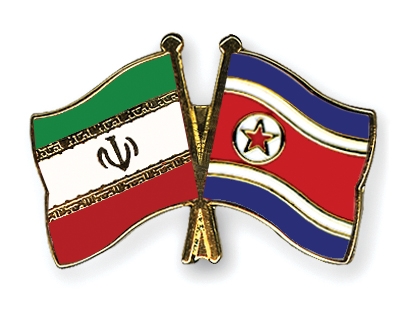The Peninsula
Iran - DPRK Nuclear Collaboration?
Published December 15, 2011
Category: North Korea

This week reports emerged that hundreds of North Korean nuclear experts are currently working in major nuclear facilities throughout Iran, adding to suspicions that the two countries have been collaborating in the nuclear realm for some time. This follows on the heels of reports that Iranian technicians were allegedly dispatched to North Korea to assist in its 2010 attempted satellite launch and that North Korean experts were sent to Iran to help clean viruses from its nuclear computing facilities and share nuclear weapons development software. However, the recently leaked IAEA report on Iran makes no mention of a direct connection between the two countries, so just how likely is it that the two countries may be cooperating in the nuclear realm?
While there have long been suspicions of nuclear cooperation between North Korea and Iran, U.S. intelligence officials flatly denied any connection in 2008 and until recently it was believed that North Korea and Iran were pursuing different paths to nuclear weapons. And while there had long been suspicions that North Korea was secretly pursing uranium enrichment, concerns regarding North Korea’s nuclear program have primarily been directed towards its small 5 megawatt experimental reactor and radio chemical laboratory facility at Yongbyon, designed to separate weapons grade plutonium from spent reactor fuel. It was only in November of last year, that suspicions that North Korea was enriching uranium were proven true. In contrast to North Korea’s plutonium based approach, Iran’s nuclear energy program is based on uranium enrichment. If Iran were to pursue a nuclear weapons program, as many suspect, North Korea would have had little to offer it in the way of enrichment. For Iran to successfully pursue a nuclear weapon, it would have to increase its current enrichment from 20 percent to levels sufficiently high for weapons usage in the range of 90 percent purity. As it was believed that North Korea and Iran were pursing different paths to nuclear weapons, there has been little to suggest that they were cooperating in this area.
To some degree, the notion of Iran-DPRK nuclear cooperation was further mitigated when North Korea showed Dr. Siegreid Hecker its advanced uranium enrichment facilities in November 2010 (based on P-2 centrifuge technology). As Gary Samore explained, “Assuming that what he saw and what the North Koreans told him is accurate, then there’s a very big discrepancy between the North Korean program, which appears to be much more advanced and efficient.. and the program in Iran…So that would suggest no connection.” Indeed, with Iran’s enrichment facilities for the most part based on vintage IR-1 centrifuge technology, North Korea’s advance in this area comes as a surprise, for if the two countries were cooperating in this field than it is puzzling as to why Iran has not benefitted accordingly.
But despite differences between the two nuclear programs and apparent levels of competency, there are nevertheless real reasons for concern. Currently Iran is not a party to the Additional Protocol, a tighter nuclear verification system that states opt-in to help assuage fears that undisclosed unclear activities may be taking place. And as we know, in 2003 North Korea walked out of the nuclear non-proliferation treaty (NPT), resulting in next-to-no on the ground presence by the IAEA since. All of this leaves a significant potential for technical cooperation in undisclosed areas, both inside the DPRK and Iran. So while Iran’s known facilities might for the most part be utilizing enrichment techniques from yesteryear, there is potential that other undisclosed sites could be taking advantage of the DPRK’s relatively advanced P2- based enrichment technology
But why might North Korea want to help Iran?
Well, asides from being a revenue earner in the face of sanctions, there is clearly scope for both to benefit. As North Korea might be getting closer to mastering the art of plutonium implosion due to its nuclear tests, its high-explosive expertise could find use in Iran. Developing implosion type nukes requires a lot of skill, so if the IAEA’s view that Iran’s weapon acquisition path would be based on the development of an HEU implosion device is true, then North Korean assistance could be of great assistance in this area. And with Iran’s recent success in launching two satellites into orbit, North Korea, disappointed by its own failed history in this area, could have strong motivations to seek Iranian assistance on ballistic missile development. Perhaps this is why recent broadcasts of Pyongyang military parades showed North Korean missiles with the same “baby shaped” nose cone that Iran has fitted on its Ghadr-1 model.
With direct flights quite straightforward between Pyongyang and Tehran, there is little the international community can do to prevent the two states cooperating on nuclear and missile related issues (the Proliferation Security Initiative has little power to intercept flights). And with both states having comparative advantages over one another in different areas, there is potentially a real motivation for Iran and the DPRK to collaborate. It is no secret that such collaboration took place in the past on missile design, but perhaps Iran’s advances in this area could now be enough to leverage substantial nuclear assistance in return. Working together, the two states can theoretically accelerate their path to realizing the development of long-range missile mountable nuclear warheads, perhaps one day capable of reaching their desired targets.
